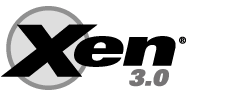Run a Centos Lamp development server on XP, Vista or Win 7 using VirtualBox
If you use a Windows based workstation or notebook computer virtualization offers a way for you to run a linux server environment using the same linux distribution and configuration you'll use in production. Virtualization allows you to explore clustering and network setups that can't be tested on your workstation alone and simplifies your development environment by keeping the LAMP environment contained inside a VM.
While VMWare offers these capabilities with their VMWare workstation product, Sun has created a free alternative called VirtualBox, with many of the same capabilities in VMWare workstation. VirtualBox runs on a variety of intel chip based operating systems including OS/X, Windows XP & Vista, Linux and Solaris, and supports the installation of many different "Guest" operating systems. In this article, I'll detail the installation and configuration of Centos. Centos is a great choice for a Linux server operating system, as it is widely used by hosting companies due to its Redhat Enterprise Linux (RHEL) core.
Our goals in this setup will be:
• Centos server running the LAMP stack
• XP can be used to develop code using the IDE of your choice.
• The XP Workstation can communicate with the linux server using standard tools: putty, winscp, firefox
• The setup works even when no other networking is available. When a network is available, no network reconfiguration is required.
• Use XP to setup private domain resolution so apache vhost configurations can be tested.
Let's get started.
Continue reading "Run a Centos Lamp development server on XP, Vista or Win 7 using VirtualBox"
While VMWare offers these capabilities with their VMWare workstation product, Sun has created a free alternative called VirtualBox, with many of the same capabilities in VMWare workstation. VirtualBox runs on a variety of intel chip based operating systems including OS/X, Windows XP & Vista, Linux and Solaris, and supports the installation of many different "Guest" operating systems. In this article, I'll detail the installation and configuration of Centos. Centos is a great choice for a Linux server operating system, as it is widely used by hosting companies due to its Redhat Enterprise Linux (RHEL) core.
Our goals in this setup will be:
• Centos server running the LAMP stack
• XP can be used to develop code using the IDE of your choice.
• The XP Workstation can communicate with the linux server using standard tools: putty, winscp, firefox
• The setup works even when no other networking is available. When a network is available, no network reconfiguration is required.
• Use XP to setup private domain resolution so apache vhost configurations can be tested.
Let's get started.
Continue reading "Run a Centos Lamp development server on XP, Vista or Win 7 using VirtualBox"

 I gave a talk on the use of Xen for web developers at Lampsig. It took me a while to get my notes transcribed, but here at last they are. This prescription has been used by me to install Xen successfully on a Fedora core 4 box, Centos 4.3 and 4.4 boxes, and should probably work on RHEL, assuming you can figure out how to get the packages you need.
I gave a talk on the use of Xen for web developers at Lampsig. It took me a while to get my notes transcribed, but here at last they are. This prescription has been used by me to install Xen successfully on a Fedora core 4 box, Centos 4.3 and 4.4 boxes, and should probably work on RHEL, assuming you can figure out how to get the packages you need.